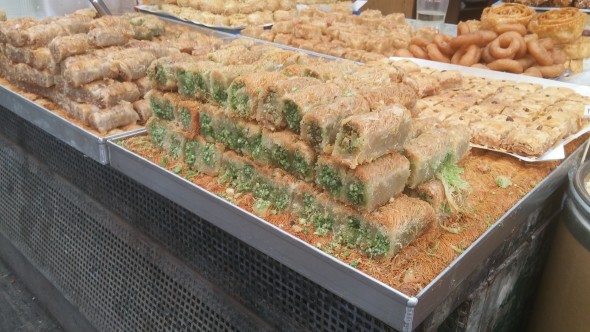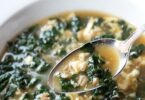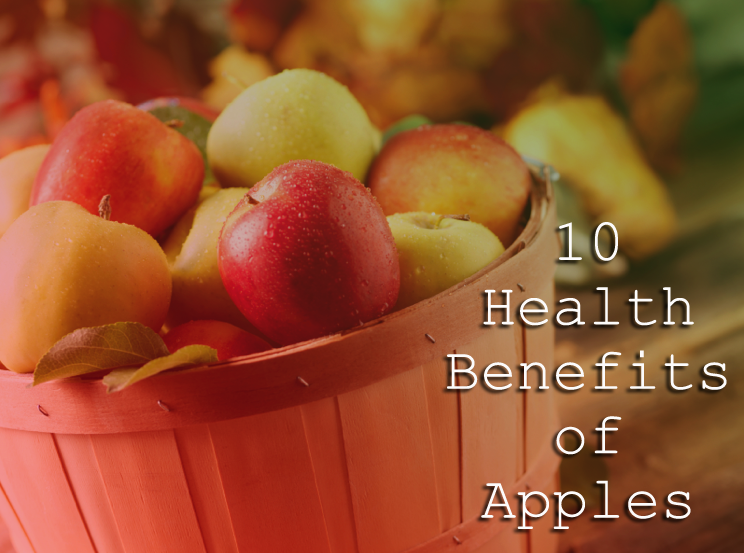Chef Yehudah Jacobs walks us through 6 Middle Eastern cookies we all need to try before we die.
These Middle Eastern cookies may have funny names, but there is nothing funny about the flavor and texture they pack into each bite. The beauty of cookies that were created in the Middle East is the use of ingredients that aren’t that popular in the United stated like rose water and almond extract, but are definitely available and can change your carb-loving game forever. Grab a cup of tea or coffee and read on what you should be dipping into it next. Here are some of the most popular Middle Eastern cookies. Peace, love, and carbs.
Ma’amul\Manena. Manena and Ma’amul are the same type of cookie. The difference is that tha manena is the Jewish name for the cookie and ma’amul is the Arabic name for the same cookie. The Ma’amul cookie originates from Lebanon and the manena traveled from Lebanon to Egypt when the Jews left Lebanon. It’s a stuffed cookie with essences of rose water and orange blossom water. The cookie itself has a melt in your mouth texture and is usually filled with either dates, almonds, pistachios or all the above. This smooth-textured cookie will really be a cool addition to your next tea party, because most Americans simply have never seen, heard of, or tried one. For a recipe click here.
READ MORE: 10 Middle Eastern Spices You Need to Know About
Ghorayeba. This cookie has a couple of names and ways to spell it, but all paths lead to a scrumptious carb experience. It’s one of our favorite varieties of Middle Eastern cookies because it is based on a shortbread recipe with an almond middle. Imagine that? Shortbread PLUS almonds? Amen, amen, amen. My wife’s grandmother hailed from Egypt and used to make these cookies fresh all the time. Earth-shattering levels of good. Ghorayeba offers buttery texture that melts in your mouth with a whole almond sitting in the middle to give it a crunchy finish, it’s a wonderful cookie eat and easy to make as well. For a recipe click here.
Baklava. In the Middle East you would pronounce this dessert as “baklawa” and not baklava with with “v.” See, you learned something already! Baklava is a cookie made out of layers of filo dough, butter or margarine, and chopped nuts. Layers and layers of filo stacked to the top of a large baking pan, then cut into little portions and soaked with a sweet syrup pre and pos baking. The syrup usually contains a type of essence like rose water or orange blossom water to give it a beautiful aroma. Hailing out of Turkey, Baklava is a great Middle Eastern dessert that can be served with ice cream or with more chopped nuts.
Morrocan pretzels. This cookie is not a pretzel at all and actually originated in Morocco. It was made mainstream in Israel by a guy named Yosef Abadi and the success of this one seems never-ending. They cookies can go either sweet or savory depending on what type of topping you use, but are a favorite treat when paired with tea, coffee, or any other snacktime beverage. The cookie itself has a hard texture, like a pretzel (hence the name), but what makes it a cookie is the topping. Some choose sweetened sesame seeds, powdered sugar, or crushed almonds with honey.
Makroudh. The makroudh cookie comes from North Africa, and is a stuffed cookie (dates, nuts) as well. Again, you learned something– Middle Eastern cookies are really big on stuffings. It’s just how this part of the world rolls. What makes it unique is the way it’s cooked. It can be baked like a classic cookie, but it can also be fried oven top in a frying pan giving it an extra crispy texture. Imagine that? A fried cookie. *insert cries from joy here*
READ MORE: The Complete History of Rugelach
Kleicha. Kleicha is the national cookie of Iraq. It comes in various shapes, sizes, and fillings all depends on the region within the country. Kleicha is usually stuffed with dates and the traditionalists make it in a round form. Today you can find it filled with cardamom or dates and coated with rose water and saffron to give it a beautiful essence and a golden brown finish. It’s a favorite for me, and tea enthusiasts tend to agree because of the wonderful texture that pairs so well with earthy black and herbal teas.











